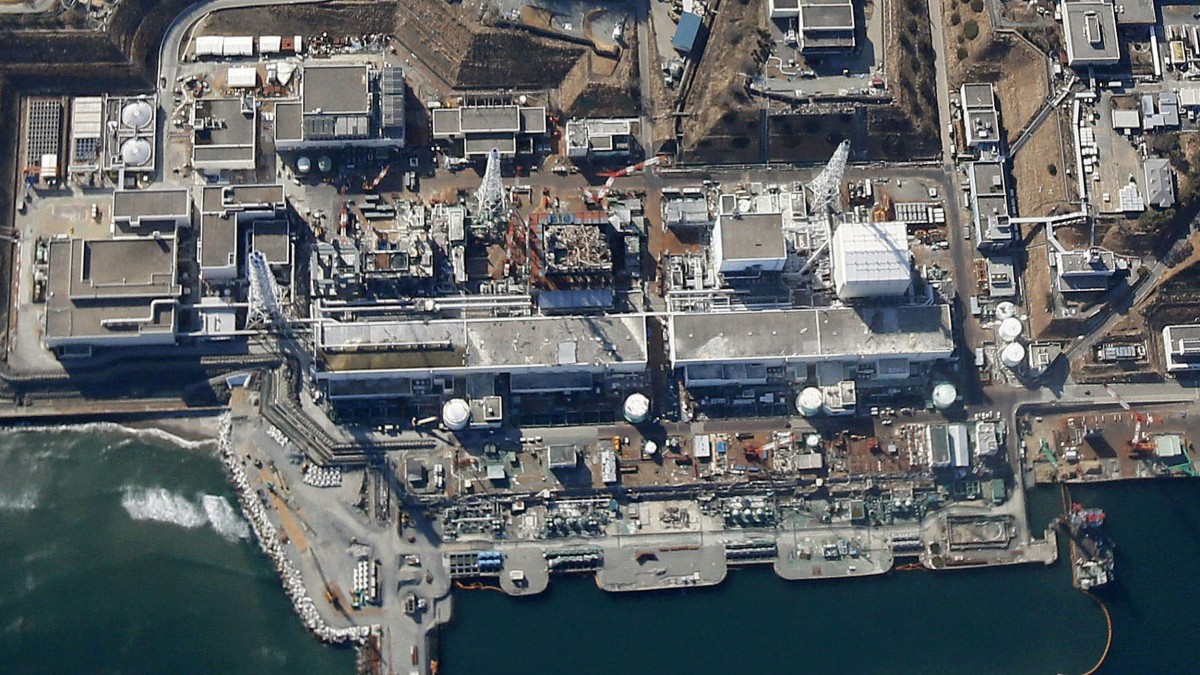 This aerial view shows the tsunami-ravaged Fukushima Dai-ichi nuclear power plant in Fukushima Prefecture, northeastern Japan, Monday, March 11, 2013. (AP Photo/Kyodo News)
This aerial view shows the tsunami-ravaged Fukushima Dai-ichi nuclear power plant in Fukushima Prefecture, northeastern Japan, Monday, March 11, 2013. (AP Photo/Kyodo News)
MINNEAPOLIS — Four years after disaster struck at the Fukushima Daiichi nuclear power plant, a United Nations watchdog organization has highlighted remaining dangers at the plant, including the possibility of a hydrogen explosion, while criticizing its operators for their lack of preparedness.
Despite the ongoing risks, Japan’s ruling government plans to allow most former residents to return to the region in the near future.
After a tsunami flooded the plant in 2011, thousands of gallons of water were used to cool the six nuclear reactors — three of which had suffered a meltdown. Now held in 1,307 containers at the plant, it appears the radioactive water is leaking, according to a report by the plant’s operator, Tokyo Electric Power Company (TEPCO), given to Japan’s Nuclear Regulatory Agency (NRA) on Friday. TEPCO inspected 278 of the water containers and found that at least 26 leak.
The leaks are likely caused by accumulating hydrogen and other gases, an issue that’s raising alarm among government officials. “If the concentration level is high, a spark caused by static electricity could cause a container to [explode],” said a representative of the NRA.
In response, TEPCO officials expressed their belief that the risk of an explosion was minimal. “We think the possibility of an occurrence of hydrogen explosion from these storage facilities is extremely low, since there is no fire origin, or anything that generates static electricity nearby,” a company spokesperson told IBTimes UK.
UN criticizes TEPCO safety precautions
But a U.N. agency report calls into question TEPCO’s ability to adequately judge risks. The International Atomic Energy Agency (IAEA), based out of Vienna, recently criticized the lack of safety precautions taken to prevent damage caused by earthquakes and tsunamis.
According to the IAEA report, TEPCO and the Japanese government received ample warning that the facilities were vulnerable, and that existing safety precautions were inadequate to allow for very rare, but still possible tsunamis of extreme height and strength.
The IAEA wrote: “The operators were not fully prepared for the multi-unit loss of power and the loss of cooling caused by the tsunami. Although TEPCO had developed severe accident management guidelines, they did not cover such an unlikely combination of events.”
Against the objections of environmental experts and Japanese fishermen, the IAEA also said TEPCO may need to reconsider controlled dumping of the contaminated water into the ocean.
‘‘TEPCO is advised to perform an assessment of the potential radiological impact to the population and the environment arising from the release of water containing tritium and any other residual radionuclides to the sea,” IAEA scientists said earlier this month.
But release of radiation and waste from Fukushima has caused worldwide concern over the safety of Japanese food products, even forcing the country to take South Korea to court over import restrictions.
Japan considers ending evacuations despite continued risks
The 2011 meltdown forced the evacuation of Okuma, the community where the plant was located, as well as many other communities in the Fukushima region. Japan is now considering allowing 54,800 Fukushima disaster evacuees to return home, while an additional 24,400 from the worst-hit parts of Fukushima would have to remain away due to the continued threat posed by radiation.
Evacuees currently receive $1,000 a month for emotional distress, and the payments are supposed to end when the evacuation order is lifted. Under new plans, all evacuees would continue receiving the payments until 2017, when the government hopes all evacuated residents will return to their hometowns after what it called an unprecedented cleanup effort.
“The proposal says it assumes that the areas will be sufficiently decontaminated before the evacuation orders are lifted but offers no scientific rationale for the target date,” reported Reuters.
TEPCO also seems to be recovering from the damage its reputation sustained in the disaster. Yahoo! Finance Australia reported the company just received a new $2.5 billion contract to operate water and power plants in Qatar, though it will not include nuclear power plants.
At least one lasting change remains from the disaster: a seemingly permanent end to the popularity of nuclear power. San Francisco Bay View recently reported on Japan’s continued efforts to go 100 percent solar, a goal supported by weekly protests at the home of Prime Minister Shinzo Abe that still sometimes draw hundreds of thousands of people.

